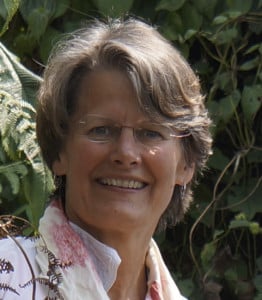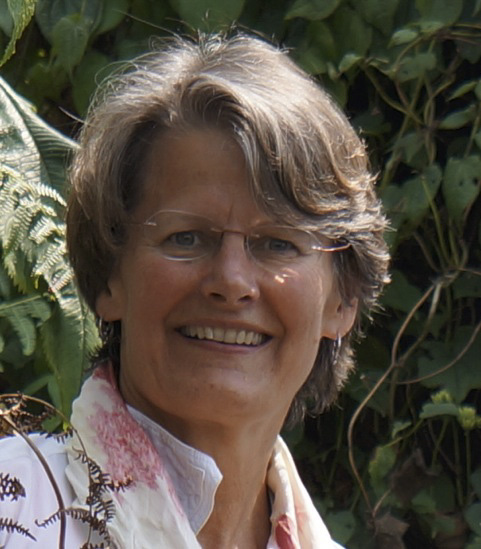
Professor of Biology Elizabeth Hadly was recently named senior vice provost for undergraduate education (VPUE), replacing fellow biology professor Martha Cyert at the end of Cyert’s three-year term on Aug. 31. The Daily sat down with Hadly to discuss her new role, in which she will lead VPUE’s undergraduate research grant programs and serve as a voice of students and faculty working in the sciences.
The Stanford Daily (TSD): What are your upcoming duties as senior associate vice provost for undergraduate education? Why did you choose to accept the position?
Elizabeth Hadly (EH): My duties are to be the scientific voice for faculty and for students on campus. I’m really excited to be paired with [Vice Provost for Undergraduate Education] Harry [Elam], who represents the humanities end of undergraduate education.
I chose to accept the position because I actually love teaching Stanford undergraduates and I find that they’re receptive to all different ways of learning…I want to make sure that the infrastructure that has been pretty well developed over the last several decades—and in particular over the last year with the [Study of Undergraduate Education at Stanford] program that was presented to the Faculty Senate last year and [that] is starting to be implemented by Harry Elam—[works]. I figured it was really important to help implement those guidelines—ways of thinking, ways of knowing, ways of doing—at Stanford. And so I wanted to provide a scientific perspective on that.
TSD: One of your main duties is to oversee undergraduate research. Did you do research as an undergrad? How has that research guided you to the work you do today?
EH: I did undergraduate research. I did an honors project on athletes—I was a runner at Colorado when I was in college. I did a research project looking at how body fat in women contributed to their cycles. I was really curious to follow that through with respect to the people that I was exercising with.
I’ve guided many undergraduate students in honor theses at Stanford and also in research projects that don’t necessarily amount to honors. I find that to be one of my most exciting parts of my job. I spend a lot of time with the undergrad students in my lab, trying to help them find their own path to the questions that are the most interesting to them and then help support them in figuring out how best to address those questions.
In terms of how my own research has contributed to my interest in undergrads, I would say that because my curiosity for addressing research questions was really stimulated when I was in college and I’ve had the freedom…to address my own questions, it’s the most exciting part of my intellectual life…to ask questions and to come up with ways to address them and to somehow disseminate those results. And so because it’s been so fulfilling to me, I find it really important and valuable to help other people in the same way. Undergraduate research is something I really prioritize in my lab and I think it’s important to experience for every Stanford student if they want to experience it.
TSD: What does your research at the Hadly Lab entail, and how did it get started?
EH: All of us address questions about the generation and maintenance of diversity. We look at that diversity in many different levels. We look at it with respect to genetic variation. We look at it with respect to species differences and with respect to the number of individuals within a species and how that’s distributed across time and space. That’s a longer way of saying we particularly investigate how climate change influences genetic species and community diversity through time and space…We try and understand what the genetic variation that we unravel means in terms of time and the response to near environmental events in the area.
TSD: How have your views on education and teaching techniques evolved?
EH: My views of teaching have evolved. I started here thinking the way to teach was to stand up and give a lecture. That was pretty well rehearsed, organized, with a lot of background information and basically just conveying the information to the students. I have evolved into a teacher that thinks that probably the most exciting way to teach is and probably is—at least in my experience with my own teaching methods—one of the most effective ways of teaching is to actually learn along with the students and show them how I learn.
Sometimes, for example, I start asking questions that I don’t know the answer to and I find that it’s a really fun way to get the students involved with the thinking and the learning and the curiosity part of addressing that question. I spend more time walking around the room; I spend less time trying to throw a lot of information in the students’ brains. I try and get them involved by getting them up on the board and having them work in small groups. Having them teach me is probably one of the most informative experiences I’ve ever had.
TSD: How did you become passionate about geological/earth sciences and biology?
EH: There are a couple of things. First when I was in elementary school, I spent some time in the Washington, D.C., area and I ended up going to the Smithsonian at every opportunity I could. That kind of stimulation with artifacts, not just human artifacts but seeing animals from other places, learning about cultures from other times, made me realize and [be] curious about the dynamics of the planet in different places at different times.
I thought for the longest time when I went to high school I was going to be a doctor. I was pre-med when I started college, but that ended up really being curious not so much about the health of humans but about their interaction with the environment and what led to the demise of human health. I ended up taking a class on the natural history of disease and I found myself being more interested in the fleas infecting the rats and that kind of environmental changes going on than how plague affected humans. It made me realize I wasn’t as interested in human health than I thought.
That got me to thinking about environments in the absence of humans and just the dynamics of that. How the dynamics of species transpired through times—why did they boom and bust and what was the climate doing at those times?
I ended up getting really interested in the fossil record. I worked for the Park Service for a while in Yellowstone National Park. I was curious about the extent of ecosystem and what the modern species of the landscape were like 100, 200, 1,000 or 2,000 years ago. That got me into wanting to know more about the fossil record and got me ultimately into my own excavations. Most people who do this excavation of fossils—paleontologists—are in the geological community. They’re geologists trained in the rock record, work in deep time, millions and millions of years ago, on species that are extinct.
But I found myself in this interesting place where I was most interested in the modern ecosystem and what the fossil record of our modern ecosystem was. That meant I was more of a biologist than a geologist; I was a little bit of both [and] straddling those two words is something I’ve never given up. I find it to be the most interesting because it brings not only the past back to life but gives you a sense of the dynamics of the modern diversity on the planet. It also gives you this amazing perspective of about where we’re going and what humans have done. I haven’t quite left either geology or biology. I couldn’t imagine relinquishing either of them in my science.
TSD: What are some of your favorite memories teaching at Stanford?
EH: One of my very favorite moments, virtually every fall, is the very first day of class in my freshman seminar at 10 a.m. on Monday morning. All the freshmen come in their very first day and I just absolutely love that day. I love learning about where everyone’s from and seeing how excited they are and how nervous they are, and hearing about what they want to learn about—that’s always been my favorite day of the year.
I also love seeing undergraduates graduate with honors…I like to keep in touch with a lot of my undergrads; it makes me feel so wonderful how they’ve grown and how they’ve come in not knowing what they wanted to do and they leave with this sense of closing up something in four years at Stanford. They seem ready to go off into this future; that’s a pretty wonderful time. I have really loved the fieldwork I’ve done with the students at Stanford. It’s an opportunity to get to know students around the campfire when they’re freezing, trying to stay warm around a cup of hot cocoa…I really love opening people’s eyes to something in a way in their own backyard. Those are wonderful experiences for me as well. And then another great time is when the undergrads come to my office with their first data, their first grant, the final paper or final thesis at hand. It’s really rewarding for me to see them succeed at what they’re trying to do.
TSD: Do you plan on teaching after accepting this position?
EH: I’m going to teach an upper division seminar or two. This is a half-time position; it’s just a two-year job for now. We’ll see how that goes.
This interview has been condensed and edited.
